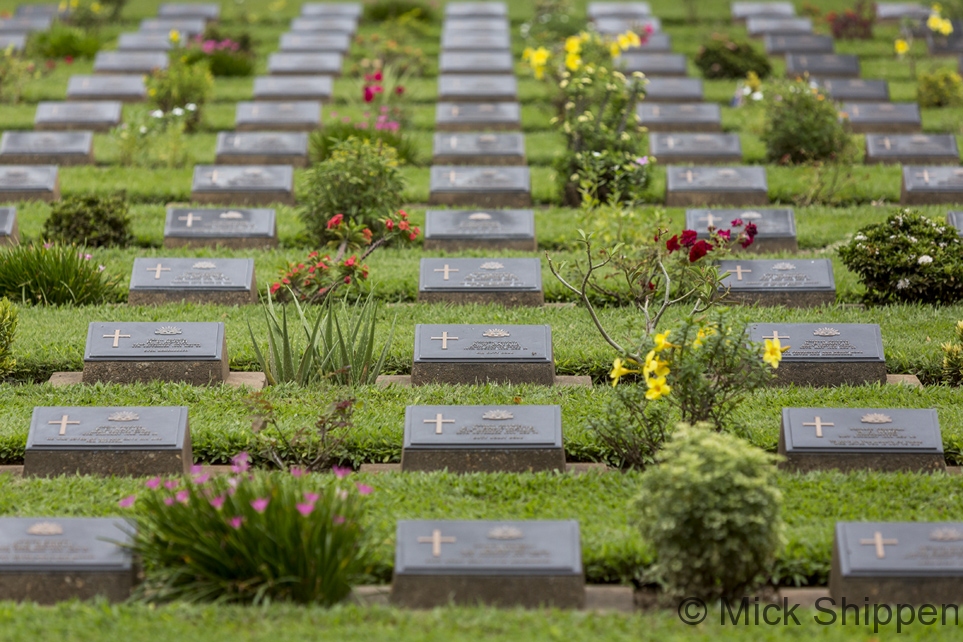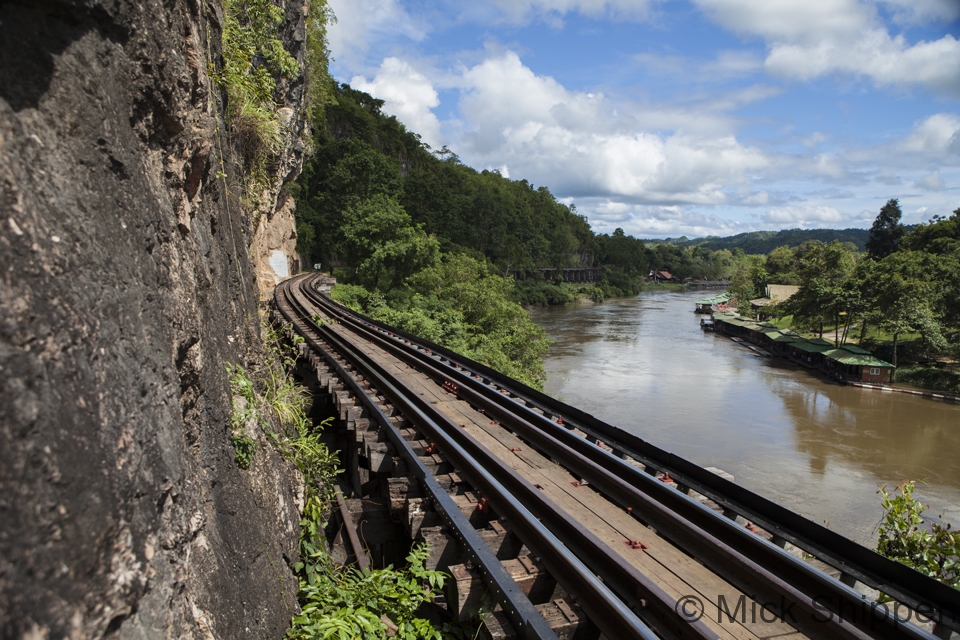The history of Australia and Thailand are inextricably linked by one of the darkest moments of World War II, the construction of the infamous Thai-Burma Railway.

Just before dusk in the provincial capital of Kanchanaburi, hoards of day trippers pose for photographs at the Bridge on the River Kwai. Others wait patiently for night to fall to witness a kaleidoscope of colours that light up the austere structure. In the ‘Land of Smiles’ where the usual tourist attractions are glistening temple spires and idyllic white sand beaches, it’s heartening to discover that a part twentieth century history that must never be forgotten proves a popular draw.

Although the original bridges in Kanchanaburi (there were two, a wooden construction and a concrete and steel one) were destroyed by a British Royal Air Force bombing raid on 13 February 1945 as part of their offensive against the Japanese, the present day bridge, built by the Thais following the release of the 1957 movie ‘The Bridge on the River Kwai’, stands as a poignant reminder of the brutal war in Asia. For many travellers, it is also the starting point for a historical journey that ends at Hellfire Pass Memorial Museum, a peaceful indoor and outdoor site dedicated to the thousands of Australian, British, Dutch, and American servicemen and Asian labourers who died of starvation, disease, cruelty and appalling conditions in Japanese prisoner of war camps from 1942 – 1945.

Visitors to Kanchanaburi can board a train that travels on a track skirted by paddy fields of gently swaying rice and an unbroken chain of dramatic forested karst mountains that tumble to the Thai-Burma border and beyond. It’s a sedate three-hour early morning journey punctuated by the clickerty-clack of aging rolling stock and the occasional burst startled birds. A little over halfway, the train slows to a crawl as it passes over Wang Po Viaduct, the only remaining structure of 688 teak bridges and viaducts built by POWs to penetrate the region’s impossibly difficult terrain and dense jungle.

In October 1942, as part of a planned invasion of India, the Japanese Imperial Army resurrected an abandoned British survey and began work on a track that would link existing Thai and Burmese systems to create one continuous line from Bangkok to Yangon. Known as the Death Railway, the 258 mile railway pushed through mountains, edged its way around cliff faces, spanned numerous rivers and in doing so claimed the lives of 90,000 Asian labourers and 16,000 Allied POWs including 2,815 Australians.

Today, what little remains of the Death Railway in Thailand, comes to an end at the small and unassuming station of Nam Tok. Here passengers alight to visit a cave with a Buddhist shrine and walk across the viaduct before traveling a further 18 kilometres by bus to the Hellfire Pass Memorial Museum. Perched on the crown of at Konyu Cutting, the museum is managed by The Department of Veteran Affairs, Office of Australian War Graves. Konyu Cutting was chosen for the site of the memorial because many men lost their lives here working 18 hour shifts to excavate a 17-metre deep and 110-metre long cutting through rock. Lit at night by dozens of bamboo oil lamps, this stretch of the railway became known as Hellfire Pass because to the men forced to work here it looked and felt like a living image of hell itself. The result is one of the finest and most lovingly cared for museums in Thailand. An agreement was made with the Thai government that would allow family members to return to Hellfire Pass and a Memorial Walking Trail along a section of track so they would be able to pay respects to their relatives and all those who died. By any measure it’s been a spectacularly successful venture. Initially visits to the free of charge museum were 50,000. Currently it welcomes more than 100,000 visitors a year from around the world and the figure continues to rise.

It’s a deeply emotional journey but an essential part of any travel itinerary in Thailand. In the museum’s main building carefully crafted exhibition explains the history, a personal MP3 audio player provides the insight of firsthand accounts, and a short film adds further weight to this shameful moment in human history. After viewing the exhibition, visitors can venture outside and down a specially constructed stairway that takes them into Hellfire Pass and along the Memorial Walking Trail, a 2.5 kilometre section of the Death Railway cleared by the museum staff. The audio file also continues with more heartrending personal accounts from survivors and historical details imparted at key sites along the trail.

Getting there:
Kanchanaburi, Thailand’s third largest but sparsely populated province lies 130 kilometres west of Bangkok. In addition to the Bridge on the River Kwai and the Hellfire Pass Memorial Museum there are many other attractions in the area to ensure several days of adventure and discovery. These include two beautifully tended war cemeteries and the JEATH War Museum in Kanchanaburi town, the Sai Yok National Park, the Erawan Falls, Prasat Muang Singh Historical Park, an expansive 250 acre site with the ruins of a Khmer Angkor period temple, and much more.
From Bangkok the most pleasant and leisurely way to reach Kanchanaburi is by train. Two trains a day leave Bangkok’s Thonburi station, also known as Bangkok Noi. The trip costs just 100 baht. Details of train times can be found at http://www.seat61.com/Thailand.htm
Where to stay:
Kanchanaburi’s popularity as with international tourist and as a weekend getaway for Bangkokians means there is now shortage of accommodation. This ranges from simple guesthouse to luxurious resorts and ‘floatels’, comfortable rooms on rafts that are unique to the area.
The above text is an abridged version of an article originally published in the Australian Sunday Telegraph.